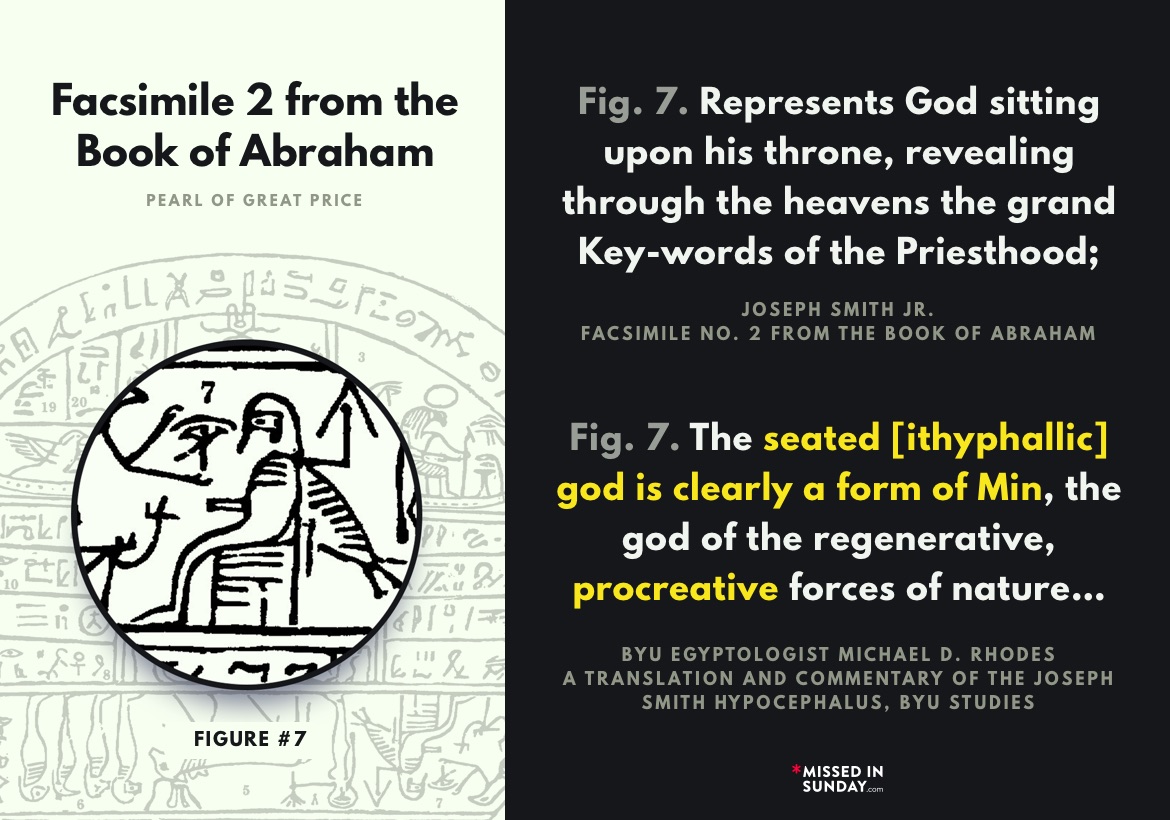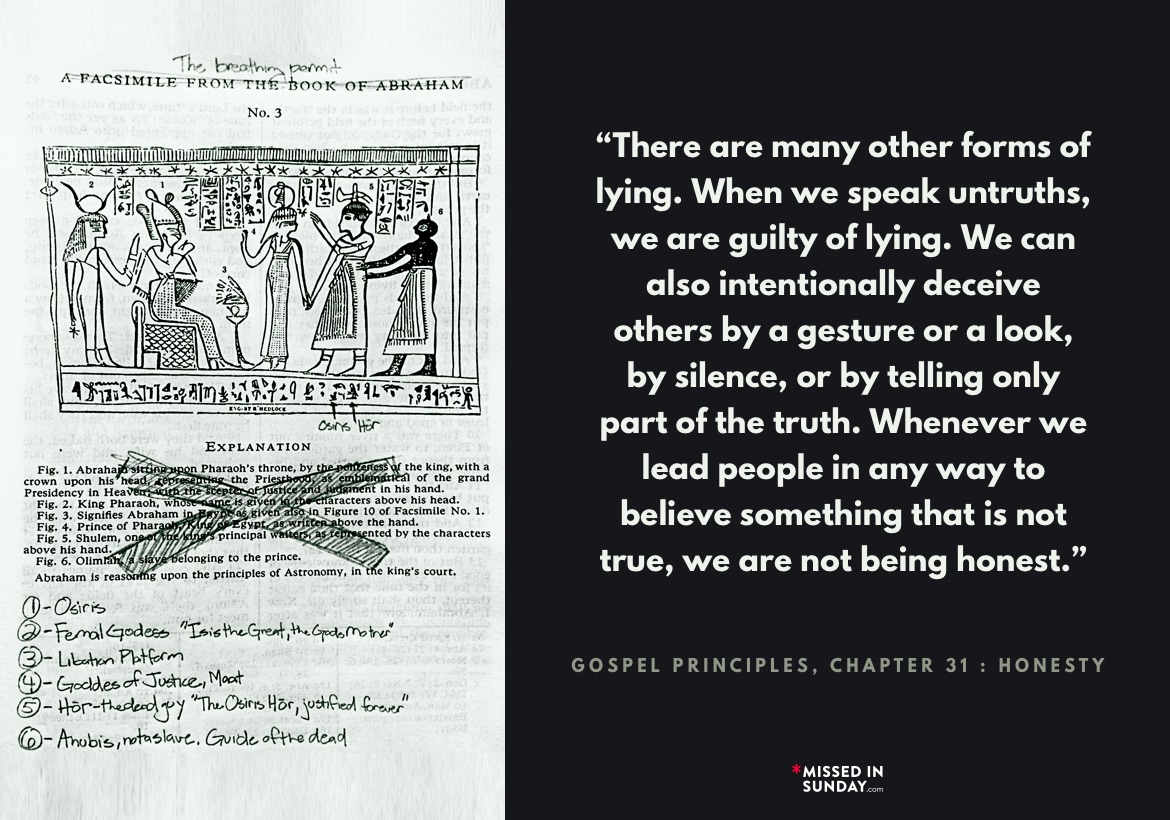Image: Facsimile #3 from the modern printing of the Pearl of Great price with corrective translations by Egyptologists handwritten in.
From Gospel Principles, Chapter 31, Honesty:[footnote] Gospel Principles, 2011, 179–83 [/footnote]
“There are many other forms of lying. When we speak untruths, we are guilty of lying. We can also intentionally deceive others by a gesture or a look, by silence, or by telling only part of the truth. Whenever we lead people in any way to believe something that is not true, we are not being honest.”
Published in the Times and Seasons in 1842, the Book of Abraham, were said to be “written by his [Abrahams] own hand, upon papyrus.” [footnote] The Book of Abraham, LDS.org [/footnote] In 1880 the church canonized the Book of Abraham along with three hypocephalus known as Facimilies 1, 2 and 3. Thought to be lost in the great Chicago Fire (1871) the papyri were later discovered in New York and returned with great excitement to the church in 1967. Soon however both LDS and non-LDS scholars determined the papyri bore no semblance to the translation provided by Joseph Smith, verifying instead that they were common Egyptian funerary documents post-dating Abraham by centuries. For over 45 years this information was concealed from the general membership until 2014 with the publication of the ‘Translation and the Historicity of the Book of Abraham’ Gospel Topic Essay, in which the church admitted “None of the characters on the papyrus fragments mentioned Abraham’s name or any of the events recorded in the book of Abraham” [footnote]Translation and Historicity of the Book of Abraham, Gospel Topic Essay [/footnote]

Compare below the translation provided by Joseph Smith and that of Egyptologists:
|
|
Modern Egyptological Translation
|
- Abraham sitting upon Pharaoh’s throne, by the politeness of the king, with a crown upon his head, representing the Priesthood, as emblematical of the grand Presidency in Heaven; with the scepter of justice and judgment in his hand.
|
- “Label for Osiris (text to the right of figure 1 of facsimile 3): Recitation by Osiris, Foremost of the Westerners, Lord of Abydos(?), the great god forever and ever(?).”
|
- King Pharaoh, whose name is given in the characters above his head.
|
- “Label for Isis (text to the right of figure 2 of facsimile 3): Isis the great, the god’s mother.”
|
- Signifies Abraham in Egypt as given also in Figure 10 of Facsimile No. 1.
|
- “Altar, with the offering of the deceased, surrounded with lotus flowers, signifying the offering of the defunct.” –Theodule Deveria
|
- Prince of Pharaoh, King of Egypt, as written above the hand.
|
- “Label for Maat (text to the left of figure 4 of facsimile 3): Maat, mistress of the gods.”
|
- Shulem, one of the king’s principal waiters, as represented by the characters above his hand.
|
- “Label for Hor the deceased (text in front of figure 5 of facsimile 3): The Osiris Hor, justified forever.”
|
- Olimlah, a slave belonging to the prince.
|
- “Label for Anubis (text in front of figure 6 of facsimile 3): Recitation by Anubis, who makes protection(?), foremost of the embalming booth,…”
|
Crash Course:
Translation and Historicity of the Book of Abraham – LDS Gospel Topic Essay
Response to the Translation and Historicity of the Book of Abraham – Robert K. Ritner
The Joseph Smith Papyri (Video) – An explanation and overview of the Joseph Smith Papyri and their connection with Mormon scripture.



